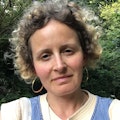Charity shop country: Conviviality and survival in austerity Britain
How do charity shops under austerity, which seem to be everywhere, work as spaces for people getting by, getting on, just about managing, and being together?
To examine the emotional and practical significance of charity shops to living together in the austerity economy, this project draws together current research on the politics and history of charity shops, austerity and eroding welfare, the affective fashioning of neoliberal selves and collectivities, especially among volunteers and thrifty shoppers, and the moody, affective power of material objects and spaces.
It will draw together current research on the politics and history of charity shops, austerity and eroding welfare, the affective fashioning of neoliberal selves and collectivities, especially among volunteers and thrifty shoppers, and the moody, affective power of material objects and spaces.
Research objectives are as follows:
- To map the shifting place of shops in discourses of charity, deservingness, community, poverty, and welfare, by developing a critical history of how charity shops fit into debates on and experiences of austerity in Britain post- 2008.
- To understand how charity shops appear in contemporary British media and discourse, using shops in narratives of poverty in the Welsh media as a point of departure.
- To investigate and describe in different media the materiality and feel of different kinds of charity shops in distinct settings.
- To examine how people make meaning out of their experiences of charity shops as shoppers, volunteers, staff, and donors.
- To identify the extent to which charity shops serve (or do not serve) as spaces of conviviality and collectivity.
Manylion
How do charity shops figure in British popular culture? How might this may have changed post-2008? To understand how charity shops appear in popular culture, we will examine national and local press from 2008-2018, social media groups and blogs devoted to thrift and charity shop cultures, and television, from the BBC’s Mr Charity to Charity Shop Sue.
What do people do in charity shops? How do shops look, sound, feel, and even smell? To understand everyday practices and the feel of different charity shops, we will observe and document a range of charity shops as a browser/shopper and as volunteers.
We will photograph shop fronts around the UK, and create descriptions of how different shops work, look, feel, sound, and smell. Collaborating with photographers and artists, we will also create portraits of distinct shops and the people who work in them.
What do people involved in charity shops as volunteers, workers and users think and feel about shops? What do they think about shops, giving back, getting by and living together under austerity? To approach these questions, we will conduct interviews, as well as arts-based collaborative workshops. Material from these interviews and workshops will become part of exhibitions for the project.
How do shops fit into broader debates about welfare, charity and austerity? To understand and interrogate how charity shops fit in broader political histories and debates, we will review two decades of interdisciplinary research on these questions together with reports from within the sector of charity retail, such as from the Charity Retail Association.
Canlyniadau
- One-month exhibition in a city community exhibition space (eg the Cardiff Story Museum, the Portsmouth Museum)
- Touring pop-up exhibition in and around charity shops during two street/culture festivals
- Book/monograph: Charity shop country: spaces of survival and conviviality in an austere present
- Research articles, including:
- ‘It’s all charity shops now’: industrial ruins, charity shops and moods of decline’
- ‘Drawing precarity: questions about researching the austerity economy’, etc.
- Project blog discussing everything charity shops and related debates.
Tîm y prosiect
Project co-ordinators

Dr Alida Payson
Teacher

Dr Kerry Moore
Lecturer
Cefnogaeth
This research was made possible through the support of the following organisations: